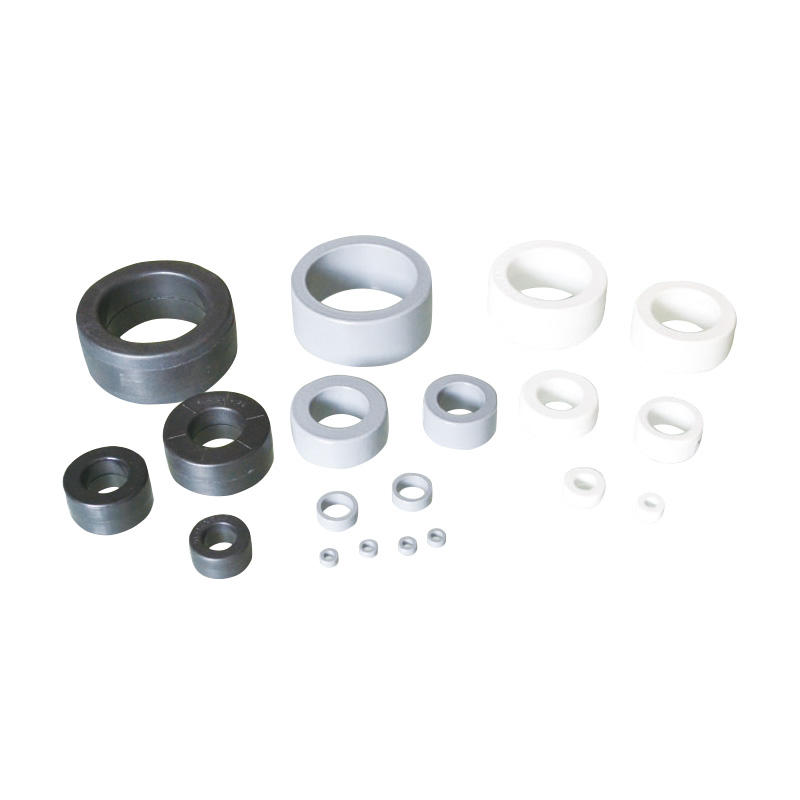Better Touch Better Business
Contact Sales at TRANSMART.
Amorphous material characteristics As a kind of rigid solid with special structure, metallic glass has higher strength than general metals (such as amorphous Fe80B20, the fracture strength σF reaches 37kgf/mm, which is more than seven times that of general structural steel); The size effect is very small.Its elasticity is also better than that of ordinary metals, and its bending deformation can reach more than 50%. Hardness and toughness are also high (Vickers hardness HV is generally around 1000~2000). The corrosion resistance of iron-based metallic glass with low chromium content (such as Fe27Cr8P13C7) is far better than that of stainless steel.Due to the long-range disorder of the atomic arrangement, the contribution of phonons to the scattering of conducted electrons is very small, making the resistivity very high, generally above 100μΩ·cm at room temperature, and the temperature coefficient of resistivity is very small (less than ±10K); It has a high residual resistance at 0K.In some amorphous alloys (such as PdSiCr), the resistance has a minimum value when the resistance temperature curve T=Tm. When T<Tm, the resistance increases as the temperature decreases, similar to that in crystalline diluted alloys. The mechanism of the Kondo effect is unclear.

There are 15 kinds of amorphous quenched superconducting alloys that have been reported. Their superconducting transition temperature is 1.5~8.71K, which is lower than that of crystalline superconductors. It is characterized by far stronger radiation resistance than crystalline superconductors.The metallic glass based on transition metals (iron, cobalt, nickel) has excellent soft magnetic properties (see magnetic materials), high magnetic permeability and low AC loss, far superior to commercial silicon steel sheets, and can be compared with permalloy. For example, (Fe4Co96)(P16B6Al3) amorphous alloy has coercivity Hc≈0.13Oe and remanence Br≈4500G, which may be widely used in high and low frequency transformers (partially replacing silicon steel sheets and permalloy), magnetic sensors, and recording Magnetic heads, magnetic shielding materials, etc.Is ordinary glass a solid? You will certainly say, of course it is a solid. In fact, it is not in a solid state (crystalline state). You must be surprised at this point. This is because glass and crystals have different properties and internal structures. You can do an experiment, heat the glass in a fire, as the temperature gradually rises, it will soften first, and then gradually melt.In other words, glass does not have a fixed melting point. In addition, its physical properties are also "isotropic." These are different from crystals. After research, the internal structure of the glass has no "spatial lattice" feature, but is similar to the liquid structure. It's just that the "quasi-crystal regions" cannot move with each other, causing the glass to have no fluidity. We call this state "amorphous state". Strictly speaking, "amorphous solid" does not belong to solid, because solid refers specifically to crystals; it can be regarded as a very viscous liquid. Therefore, "amorphous state" can be proposed as another state of matter. In addition to ordinary glass, there are many "amorphous" solids, such as rubber, paraffin, natural resin, asphalt, and polymer plastics.
There are many types of amorphous materials. Silica (SiO2), and the mixture of silica and oxides of Al, Na, Mg, Ca and other elements constitute the oldest and most important inorganic glass, some VA -The mixture of group VIA and VIIA elements is also easier to obtain its glass state (such as chalcogenide glass).In addition to traditional glass and the recently rapidly developed metallic glass, it also includes amorphous semiconductors, amorphous high polymers, amorphous dielectrics, and amorphous ionic conductors. In the past 20 years, due to the excellent physical and chemical properties of amorphous materials and a wide range of technical applications, they have developed rapidly and become a large class of important new solid materials.
Copyright © 2025 TRANSMART INDUSTRIAL LIMITED | All Rights Reserved
Hello, please leave your name and email here before chat online so that we won't miss your message and contact you smoothly.